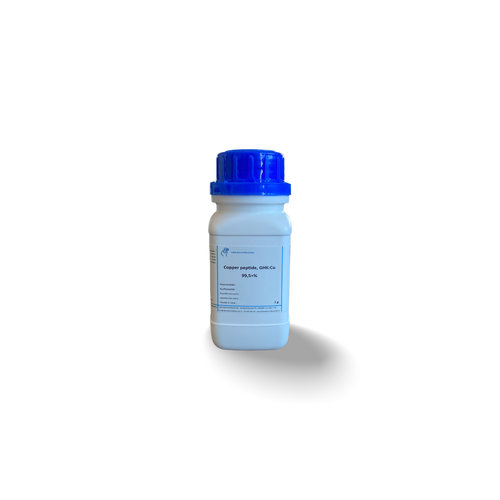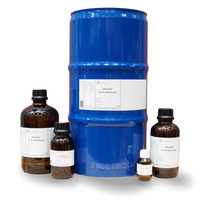You have no items in your shopping cart
Copper Peptide Ghk-Cu
The copper peptide GHK is a tripeptide having the primary structure Gly-L-His-L-Lys. It is a natural chelator with a high affinity for copper(II) Cu2+. The resulting complex is commonly referred to as GHK-Cu. It was first isolated from human plasma, but is also present in saliva and urine.
Copper peptides are generally small protein fragments with a high affinity for copper(II)Cu2+ cations. Plasma GHK-Cu levels at age 20 are about 200 µg ml-1, but drop to 80 µg ml-1 at age 60. In humans, GHK-Cu promotes wound healing, stimulates glycogen and glycosaminoglycan synthesis in skin fibroblasts and blood vessel growth, has anti-inflammatory and antioxidant properties, and attracts immune system cells. Recent studies have shown that it can modulate the expression of a large number of human genes, generally by restoring the expression of these genes corresponding to the healthy state. Synthetic GHK-Cu is used in cosmetics and as an ingredient in so-called “repairing” and “anti-aging” products2.
In studies on the affinity of GHK for copper, where the histidine residue was replaced by a synthetic amino acid, it was shown that the glycine residue plays an essential role in copper binding, while the lysine residue can interact with copper only in basal. At physiological pH, lysine can interact with a cell receptor. Thanks to GHK's ability to interact with both copper and a cellular receptor, it can transport copper in and out of cells. The small size of the GHK molecule allows it to circulate rapidly in the extracellular space and easily access cellular receptors3.
The structure of the GHK-Cu complex has been studied in detail by X-ray crystallography, electron paramagnetic resonance, X-ray absorption spectrometry, NMR spectroscopy or even by titration. In this complex, the Cu2+ cation is coordinated to the imidazole nitrogen of the side chain of the histidine residue, to the amino group α nitrogen of the glycine residue, and to the nitrogen atom of the deprotonated peptide bond between glycine and histidine residues. Insofar as such a structure does not explain the great stability of this complex, whose decimal logarithm of the dissociation constant is worth log10(K) = 16.44, against 8.68 for the GH-Cu complex, which is similar in structure to the GHK-Cu complex, it has been suggested that another GHK atom is involved in stabilizing the complex with copper. It could be the carboxylic oxygen atom of the lysine4 residue.
Many researchers have proposed that GHK-Cu complexes form dimers and trimers at physiological pH which may include a histidine residue and/or the copper binding region of the albumin molecule. The dissociation constant of the complex formed with copper is log10(K)=16.2 with plasma albumin versus 16.44 with GHK.
Copper(II) redox activity is neutralized when complexed with GHK, allowing the delivery of non-toxic copper to cells
Technical data:
CAS: 49557-75-7
Formula : C14H22N6O4Cu C4H4O2
g/mol : 485.986






